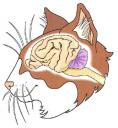Can Sounds Be Addictive?
Monday, February 22nd, 2010Fast Company has a great article on The 10 most Addictive Sounds in World. Here is how they were found:
 “Buyology Inc. and Elias Arts, a sound identity company in New York, wired up 50 volunteers and measured their galvanic, pupil and brainwave responses to sounds using the latest neuroscience-based research methods. We learned that sound has remarkable power. This may not be surprising for many, but it was certainly surprising to realize just how many commercial brands over the past 20 years have made their way into the world’s 10 most powerful and addictive sounds–beating some of the most familiar and comforting sounds of nature.”
“Buyology Inc. and Elias Arts, a sound identity company in New York, wired up 50 volunteers and measured their galvanic, pupil and brainwave responses to sounds using the latest neuroscience-based research methods. We learned that sound has remarkable power. This may not be surprising for many, but it was certainly surprising to realize just how many commercial brands over the past 20 years have made their way into the world’s 10 most powerful and addictive sounds–beating some of the most familiar and comforting sounds of nature.”
I won’t spoil any surprise by listing the sounds in this post, especially since the article includes a section for those that want to take a QUIZ . Be sure to listen to the sounds and ask yourself – can you ignore many of these? I think not.
The lesson for cognitive designers is simple, be sure to go beyond the visual when doing sensorial design. We often forget about the cognitive power of sound.









